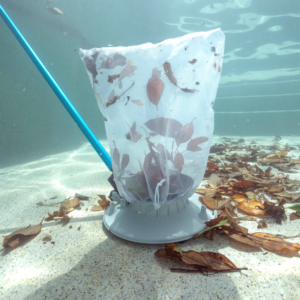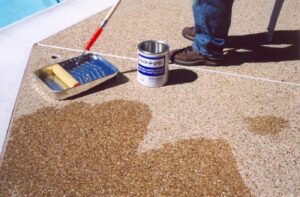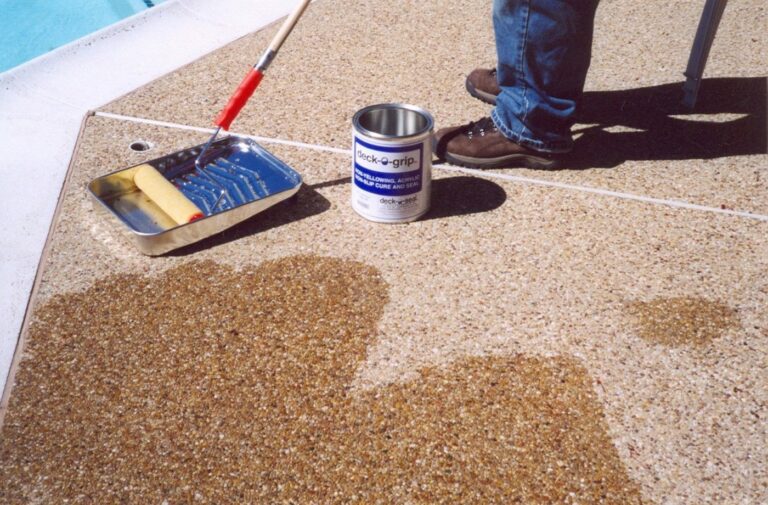Did you know that pools are drought-friendly? While there is a lot of misinformation currently circulating, the truth is that we can actually save water by building more pools. At this time, many California pool owners likely feel anxious and uncertain, wondering what specific pool care considerations they need to take during a drought. Here’s what you need to know about the current crisis, how it affects the industry, and specific pool care considerations during a drought.
California Drought and the Pool Industry
Water conservation is at the top of the agenda in many California community council meetings. As the drought in California rages on, cities and towns in the state have become increasingly eager to find a means to mitigate the ongoing situation. In their efforts, a large number of communities have turned their focus to the pool industry.
Upon first glance, it may look like pools are large water wasters. After all, they are significantly sized basins of water. However, as the California Pool & Spa Association (CPSA) is trying to make abundantly clear, pools are, in many cases, actually water savers.
How Swimming Pools Help with the California Drought
Homeowners who have been toying with the idea of building a new swimming pool or renovating an older one may be feeling that they’re on the wrong side of the ongoing drought battle. Reality is that pool ownership often helps save water.
According to the Pool & Hot Tub Alliance’s “Let’s Pool Together” campaign, these are the facts regarding the pool and spa industry and the drought:
- On average (with filling included) a pool uses 32,000 gallons of water in its first year. While a lawn of about 1200 square feet requires about 44,000 gallons of water each year for upkeep. This results in an average water savings of 12,000 gallons in the first year of having a pool and 30,000 gallons in the years following (due to the fact that the initial fill is already done).
- According to one study, even a drought-resist yard uses about the same amount of water as a 1200 sq. ft. pool will in the year after it is built.
- Pools also typically include deck space around the pool. This added hardscaping also cuts down on the amount of surface area requiring water.
- In addition, during the time that the pool is being built, the amount of water that was previously used in irrigation of the area is saved.
How Pool Owners Can Further Conserve Water
Keep an Eye Out for Leaks
It only makes sense that a leaky pool is not going to be good for conserving water. Of course, some water loss is expected due to evaporation and splashing. Left uncovered, a pool can lose up to a quarter inch of water or more each day in the hotter months. If a pool is losing more than that on a regular basis. There is likely a leak that needs to be addressed.
To address cracks before they cause major issues, an epoxy product can be used on concrete, tile, or fiberglass. EpoxyBond Pool Putty comes in either a double tube form (one resin and one hardener) that requires combining of the two or the highly convenient single stick version. Both products cure underwater, so no draining is necessary.
Using Pool Putty
- Identify the crack
- Clean the area so that it’s free of algae, rust, etc.
- If using the original Pool Putty dual stick, cut equal amounts of resin and hardener and knead together (wear gloves to prevent skin irritation). If using the single stick Pool Putty, simply cut off the desired amount (both hardener and resin are in the one product) and knead together.
- Be sure to mix the products thoroughly. The products are different colors so that you can see when they are completely mixed.
- Apply the mixture to the crack. Be sure to work it in and then smooth the surface.
Setting time depends on the temperature, but Pool Putty typically sets in 3 ½ hours or less. The product comes in both white and black. Once cured, the product does not discolor, sag, or shrink.
Use Cartridge Filters

When it comes to pool filters (cartridge, DE, and sand), every pool owner has their personal favorite and a list of reasons why. While there are valid arguments to be made for using each type of filter, during a drought using cartridge filters makes a lot of sense.
Both sand and diatomaceous earth filters require regular backwashing (reversing the water flow to clear contaminants) to filter the pool water effectively. These types of filters can only hold a certain amount of contaminants before they become too full. A high pressure reading (10 PSI over baseline reading) on the filter’s pressure gauge indicates that it’s time for backwashing. Pressure builds because water can no longer move through freely.
Depending on pool size, backwashing a sand or DE filter can use anywhere between 200 and 1000 gallons or more of water. The backwashing process requires much more water than rinsing or soaking a cartridge filter (typically less than 25 percent of what is needed for backwashing).
Cartridge filters should be taken out every three months or more often and rinsed with a garden hose and occasionally sprayed with a filter cleaning solution. Approximately every six months cartridge filters need to be soaked in a filter cleaner/water solution.
FILBUR Cartridge filters are exceptionally durable with reinforced center cores for higher debris capacity, which means fewer cleanings are necessary. Also, FILBUR cartridge filters feature sharp pleat folders that make for quicker and easier cleaning.
Cover Pool and Adjust Water Features When Not In Use
To lessen water lost to evaporation, covering the pool with a pool cover when not in use is a must. Without a cover, a pool can lose a quarter to a half an inch or more of water per day. Higher temperatures, lower humidity, and wind can affect the rate of evaporation. Pool covers should be cut to properly fit the pool for the best protection or have an automatic cover installed for easy opening and closing.
Water features add fun and excitement to a pool, but they also increase evaporation. Pool owners who have water features will want to turn these features off when the pool is not in use and adjust the angle and flow of the features to minimize splashing. CMP offers stunning water feature products that allow for simple adjustments to be made to water flow and angle.
If you are interested in learning more about drought solutions for the pool and spa industry, reach out to our experienced team of pool manufacturer reps at hello@alphawest.com. And remember to get up to speed on how pools and spas are part of the solution to the drought. Then, help spread the word to our lawmakers and neighbors.






